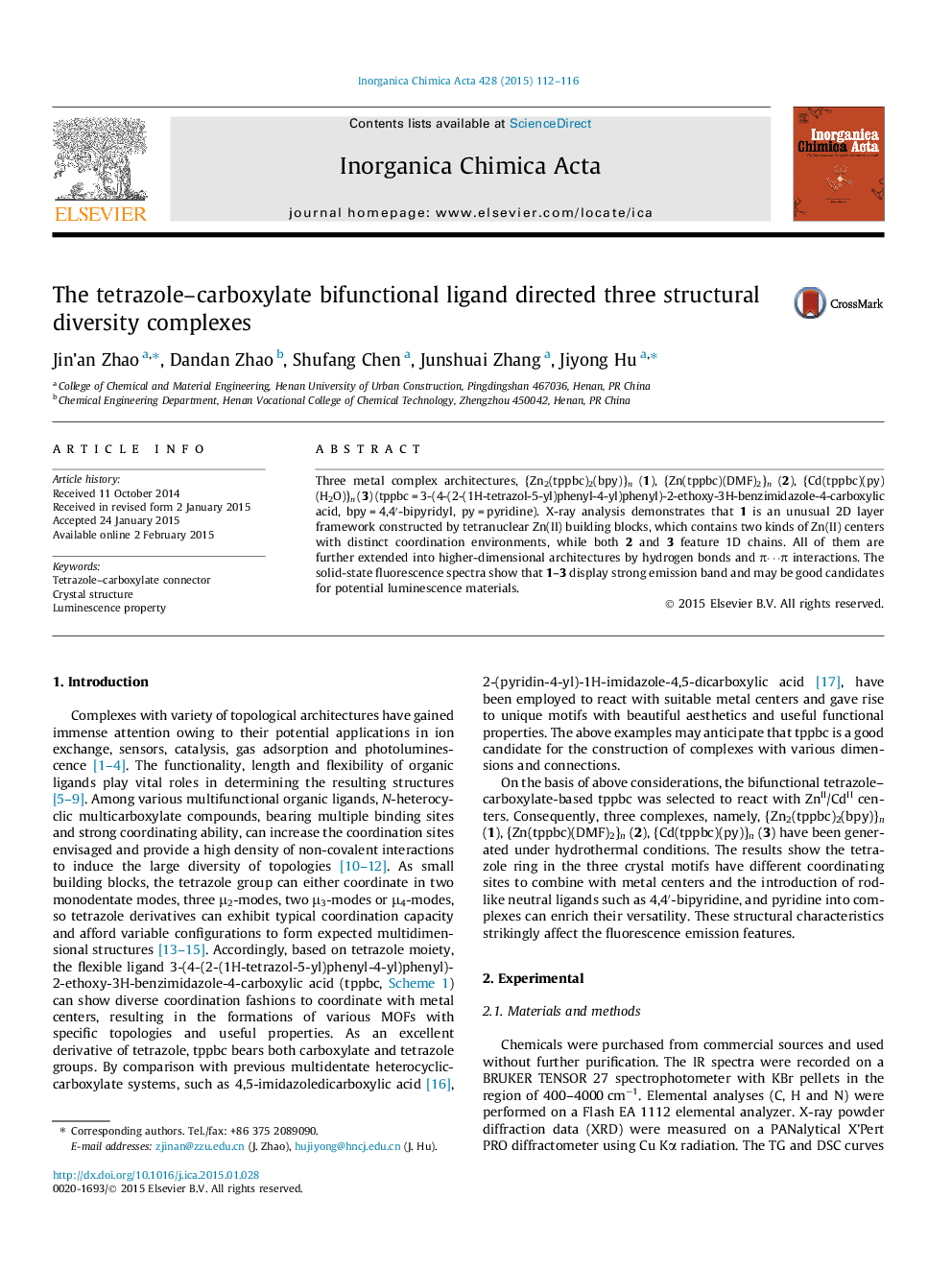| Article ID | Journal | Published Year | Pages | File Type |
|---|---|---|---|---|
| 1305511 | Inorganica Chimica Acta | 2015 | 5 Pages |
•This contribution has described the synthesis of three new complexes built from tppbc ligand and ZnII/CdII metal centers.•The structural features of the three complexes indicate that coordination modes of tppbc have significant influence on the resulting motifs.•The photoluminescent behaviors are closely bound up with organic ligands binding with metal centers.
Three metal complex architectures, {Zn2(tppbc)2(bpy)}n (1), {Zn(tppbc)(DMF)2}n (2), {Cd(tppbc)(py)(H2O)}n (3) (tppbc = 3-(4-(2-(1H-tetrazol-5-yl)phenyl-4-yl)phenyl)-2-ethoxy-3H-benzimidazole-4-carboxylic acid, bpy = 4,4′-bipyridyl, py = pyridine). X-ray analysis demonstrates that 1 is an unusual 2D layer framework constructed by tetranuclear Zn(II) building blocks, which contains two kinds of Zn(II) centers with distinct coordination environments, while both 2 and 3 feature 1D chains. All of them are further extended into higher-dimensional architectures by hydrogen bonds and π⋯π interactions. The solid-state fluorescence spectra show that 1–3 display strong emission band and may be good candidates for potential luminescence materials.
Graphical abstractThe reactions of ZnII/CdII metal centers and an excellent derivative of tetrazole tppbc bring about complexes 1–3 with different motifs. The structural feature of the complex 1 indicates that aromatic multicarboxylate ligands combining nitrogen heterocycle synthons may act the synergistic effect and offer greater tunability of structural frameworks. In addition, photoluminescence properties of complexes 1–3 illustrates these structural characteristics strikingly affect the fluorescence emission features of the complexes.Figure optionsDownload full-size imageDownload as PowerPoint slide
